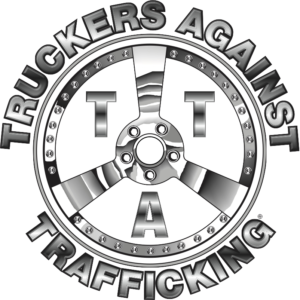Audits & Reviews
New Entrant Safety Audit
This audit is designed to ensure that new motor carriers comply with federal safety regulations and have the necessary systems in place to operate safely.
Purpose
- Safety Compliance: The audit assesses whether the new entrant has established safety management controls in line with FMCSA (Federal Motor Carrier Safety Administration) regulations.
- Regulatory Understanding: It ensures that the company understands and is ready to comply with the various regulatory requirements for commercial transportation.
Who is Subject to the Audit?
- New Motor Carriers: This includes companies that have been operating for less than 18 months and have been issued a USDOT number.
- Interstate Carriers: The audit only applies to those engaged in interstate commerce.
Key Areas of Focus
- Driver Qualifications: Verification that drivers meet all qualifications, including licensing, medical certifications, and training.
- Vehicle Maintenance: Ensuring that vehicles are properly maintained and meet safety standards.
- Hours of Service: Compliance with regulations governing driving hours and rest periods to prevent fatigue.
- Safety Management Controls: Assessment of policies and procedures for ensuring safety, including incident reporting and safety meetings.
- Drug and Alcohol Testing: Verification of a drug and alcohol testing program for drivers, including random testing and record-keeping.
Preparation Tips
- Documentation: Maintain thorough records for all aspects of your operation, including driver qualification files, vehicle maintenance logs, and compliance with drug and alcohol testing regulations.
- Training: Ensure that all employees are trained on safety procedures and regulations.
- Internal Audits: Conduct your own internal safety audits to identify and address potential issues before the DOT audit.
- Compliance Systems: Implement and maintain effective safety management systems and ensure they are regularly reviewed and updated.
Audit Process
- Notification: The FMCSA will notify you of the audit, which typically occurs within the first 12 months of receiving your USDOT number.
- Review: The auditor will review your documentation and operations, focusing on the key areas mentioned above.
- On-Site Visit: An auditor may conduct an on-site visit to inspect vehicles and facilities.
- Findings: After the audit, you will receive a report detailing any areas of non-compliance and recommended corrective actions.
Outcomes
- Pass: If you meet all requirements, you will continue operating without additional restrictions.
- Fail: If you fail the New Entrant Safety Audit, you will be given 60 days to correct any deficiencies.
Being well-prepared for the DOT New Entrant Safety Audit can help you avoid common pitfalls and ensure that your operations run smoothly and in compliance with federal regulations.
Truck Safety Consulting Inc has a 100% PASS rate with all clients that we have assisted through the New Entrant Safety Audit process.
Contact our office for more information.
Contact our office for more information.
DOT Focused Review
A DOT Focused Review is an in-depth examination conducted by the Department of Transportation to ensure compliance with safety regulations and standards within the transportation industry. This review targets specific areas of concern, such as driver qualifications, hours of service, vehicle maintenance, and hazardous materials handling. It involves scrutinizing records, procedures, and practices of transportation companies to identify potential violations or areas needing improvement. The goal is to enhance safety and regulatory adherence, thereby reducing the risk of accidents and promoting a safer transportation environment. The findings from a DOT Focused Review can lead to corrective actions and improved industry practices.
Common violations found during a DOT Focused Review include:
- Hours of Service (HOS) Violations: Drivers exceeding maximum driving hours or failing to take required breaks.
- Driver Qualification Issues: Incomplete or missing driver qualification files, including medical certificates and driving records.
- Vehicle Maintenance Failures: Inadequate vehicle inspections, maintenance records, or unresolved mechanical issues.
- Logbook Errors: Inaccurate or falsified driver logbooks.
- Controlled Substances and Alcohol Violations: Non-compliance with drug and alcohol testing regulations.
- Hazardous Materials Handling: Improper documentation, packaging, or transportation of hazardous materials.
- Insurance Violations: Insufficient or lapsed insurance coverage.
Addressing these violations is crucial for ensuring compliance and safety in the transportation industry.
To improve compliance with DOT regulations, companies can adopt the following tips:
- Regular Training: Conduct frequent training sessions for drivers and staff on DOT regulations, safety practices, and company policies.
- Robust Record-Keeping: Maintain comprehensive and up-to-date records for driver qualifications, vehicle maintenance, and hours of service. Use digital systems for easier management and retrieval.
- Routine Audits: Perform internal audits to identify and address potential compliance issues before they are found in an official review.
- Advanced Monitoring Systems: Implement Electronic Logging Devices (ELDs) and GPS tracking to ensure accurate logging of hours of service and vehicle locations.
- Preventive Maintenance Programs: Schedule regular vehicle inspections and maintenance to address mechanical issues proactively.
- Clear Policies and Procedures: Develop and enforce clear policies regarding drug and alcohol testing, hazardous materials handling, and other critical areas.
- Driver Health and Wellness: Promote programs that support driver health, wellness, and fitness for duty, including regular medical evaluations.
- Open Communication Channels: Encourage open communication between management and drivers to promptly address compliance concerns and suggestions for improvement.
By implementing these practices, companies can enhance their compliance with DOT regulations and promote a safer, more efficient operation.
Truck Safety Consulting is pleased to offer onsite reviews and simulated D.O.T. audits to any trucking company requesting this. We will send one of our Safety Professionals to review your files, driver’s logs, and maintenance files and policies and provide a written assessment of any deficiencies found.



